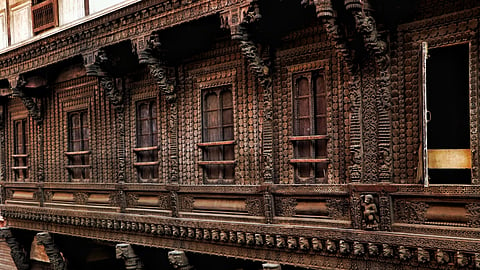Tankshal ni Haveli: A glimpse into Ahmedabad's Royal Mint
If you take a leisurely stroll through the Walled City of Ahmedabad, you'll encounter a plethora of captivating wooden havelis. While some of these architectural gems are still inhabited by families, others appear to be abandoned. Among them stands out Tankshal ni Haveli, distinguished by its remarkable wooden facade spanning an impressive 25 meters—the longest in the entire walled city. However, this haveli wasn't a mere residence; rather, it served as a royal mint during the reign of the Mughal sultanate, responsible for producing silver coins.
Read on to find about the intriguing history of this enchanting structure.
The Royal Mint of Mughal sultanate
During the Mughal rule over Ahmedabad, Badshah Akbar aimed to establish the city as a pivotal hub for both trade and administration in the region. To achieve this vision, a local currency was necessary. Since supplying coins from Delhi posed logistical challenges, Akbar commissioned the construction of a Royal Mint dedicated to the minting of silver coins.
The Royal Mint, characterized by its intricate wooden facade, earned the name Tankshal ni Haveli. The road beneath the haveli eventually became known as Tankshal Road. This vibrant area once thrived with the resilience of mint workers and their families.
Enchanting architecture
Although its primary function was to serve as a place where coins can be made, the mint's architecture was nothing short of extraordinary. The mesmerizing wooden work, with distinct square patterns carved atop support pillars, each unique, attests to the exceptional skills and creativity of the artisans. At the plinth level, metal rings were affixed to the building, serving as hitching posts for the horses of soldiers and officials visiting the mint.
Today, the road has transformed into the largest wholesale market and warehouse for imitation jewelry and raw materials for ethnic wear, including beads and artificial pearls. Additionally, it stands as the primary supplier of traditional Gujarati folk attire—Kediyu and Chaniya Choli.
Despite this change, remnants of the area's storied past persist, visible in the haveli's distinctive architecture and undeniable charm.
To get all the latest content, download our mobile application. Available for both iOS & Android devices.

